MusicRadar Verdict
The Forty Three nails that wartime acoustic vibe and presents a worthy alternative to the J-45 if you are looking for a round-shouldered dread with attitude.
Pros
- +
Old-school charm by the bucket-load.
- +
Meticulous attention to detail.
- +
Bright and upfront voice excels at blues and chord work.
- +
Look at that finish – an orgy of earth tones.
- +
A very playable acoustic.
Cons
- -
You might want a J-45.
MusicRadar's got your back
What is it?
Take a look at the picture above and ask yourself: what is the first acoustic guitar that comes to mind? It's a famous one, much-loved through the decades, an American icon if you will. But, no, it's not that.
The above guitar is named The Forty Three, and it's from British guitar builder Alister Atkin. But yes, you'd be correct in what you're thinking because it has that J-45 vibe all over it. Gibson's J-45 was introduced in 1942 but in Atkin's view, it was perfected a year later, and this his tribute to that acoustic.
The Forty Three is a round-shouldered dreadnought, in a pleasingly antique stain of sunburst. It has the dot-inlays on the fingerboard. It has the straight bridge, the faux tortoiseshell teardrop pickguard, the "banner-style" headstock, Aged three-on-a-plate Kluson tuners with classic plastic buttons, and cream body binding.
The build has baked Sitka spruce on the top with mahogany on the back, sides and neck. The fingerboard is pau ferro. It looks every inch the workhorse flat-top. There is a simplicity to the Atkin that gives it a blue-collar appeal, as though it'd wear the odd ding well, that it is build to be carried around everywhere you go.
Atkin bakes all of his brace wood, which he says helps maintain stability. And baking, he says, is the key to his spruce tops sounding period-correct.
While some might argue that there is just no substitute for a vintage instrument. Its aged wood. Its bright crispness. Its uncanny neck, clubby but so accommodating to the fretting hand... But modern builders are getting closer and closer with each fastidious detail they actualise in their designs.
The Forty Three is case in point. You can get a full gloss or aged, in which the lacquer remains in good condition save for some checking. The ageing techniques used by Atkin are not too dissimilar to Gibson's VOS processes, and it really preserves the illusion that this was a wartime acoustic.
The lack of aesthetic frippery speaks to that moment, of factories begin commandeered for the war effort. That austere design, mandated or not, ages well. Under the hood, Atkin has developed his own scalloped spruce bracing inspired by pre-war patterns, with mahogany kerfing.
Atkin bakes all of his brace wood, which he says helps maintain stability. And baking, he says, is the key to his spruce tops sounding period-correct, and it has been central to Atkin's process for the last 10 years.
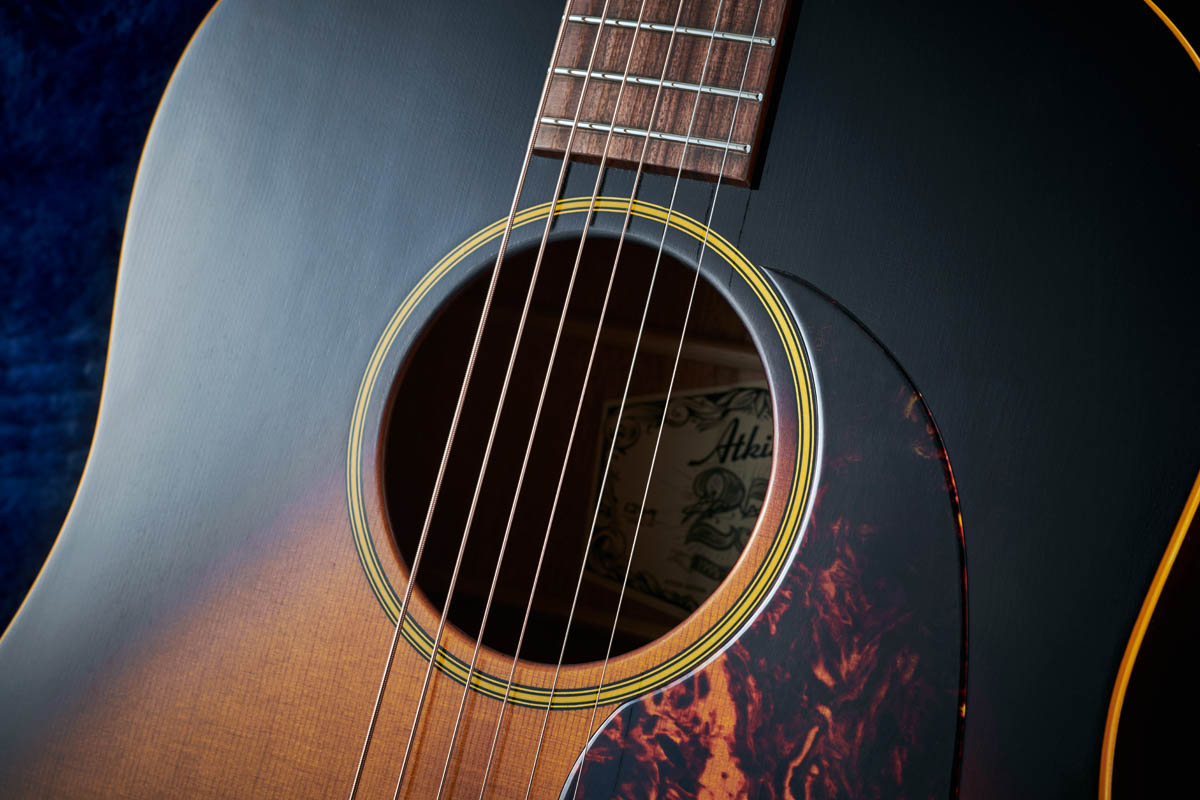
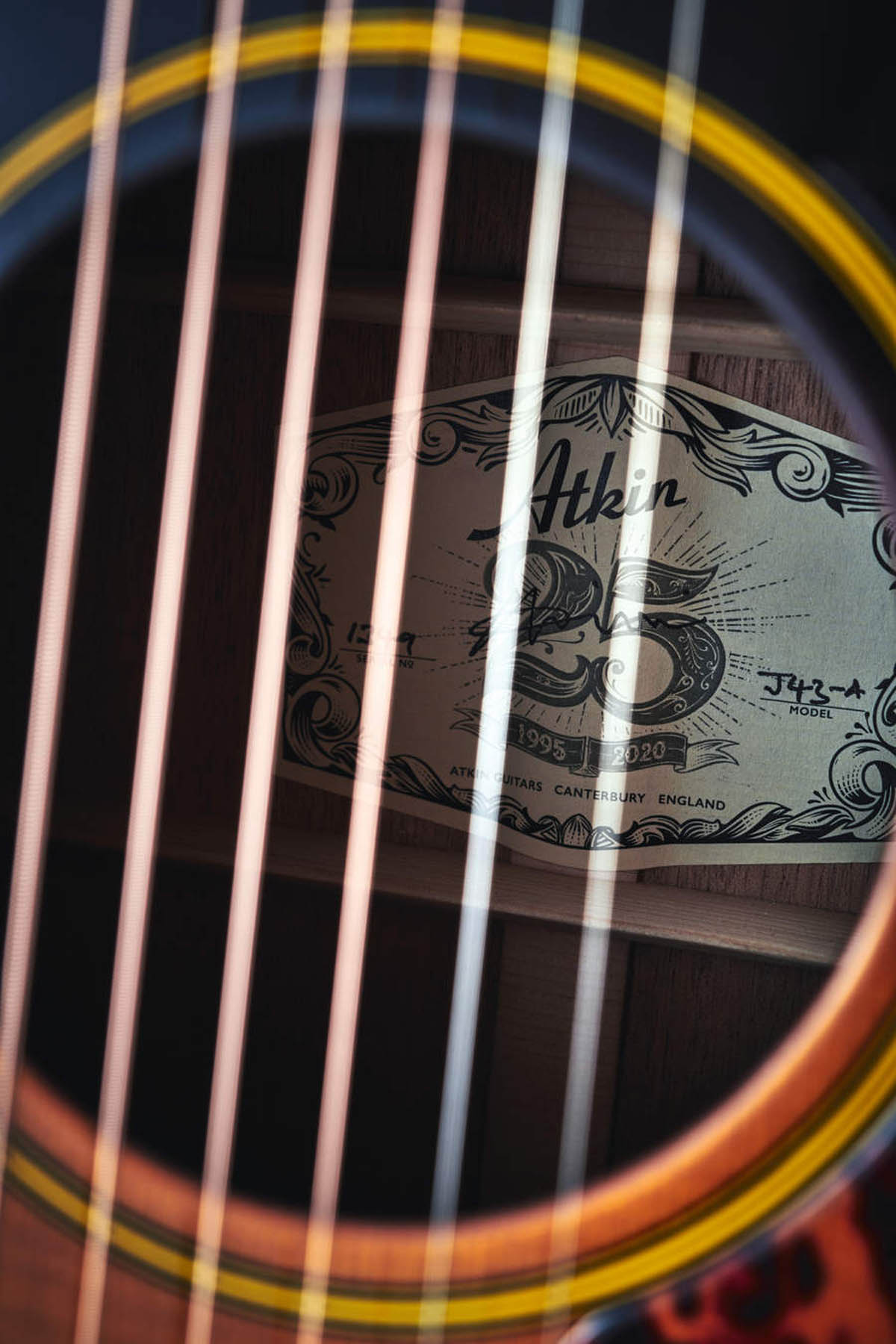
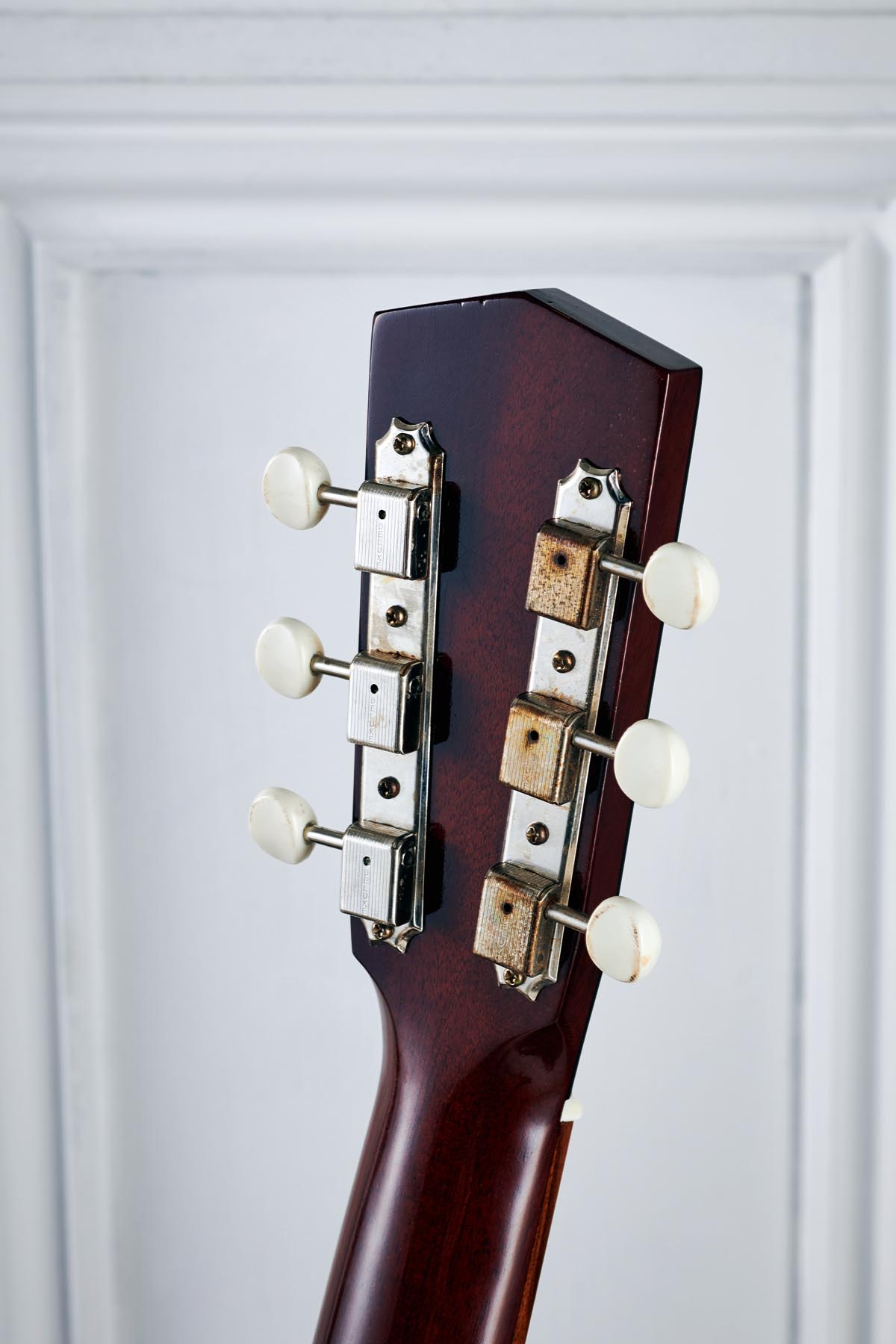
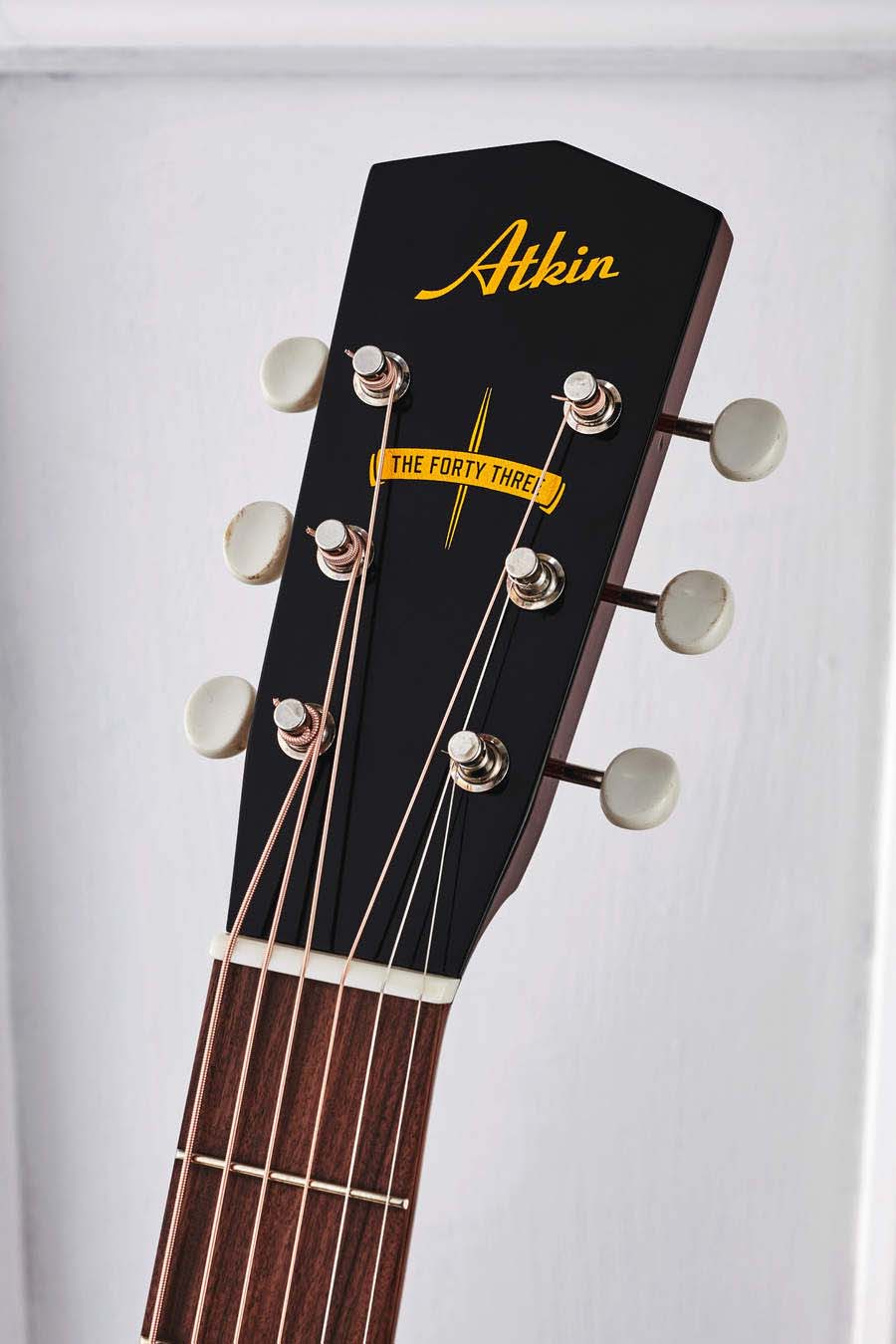
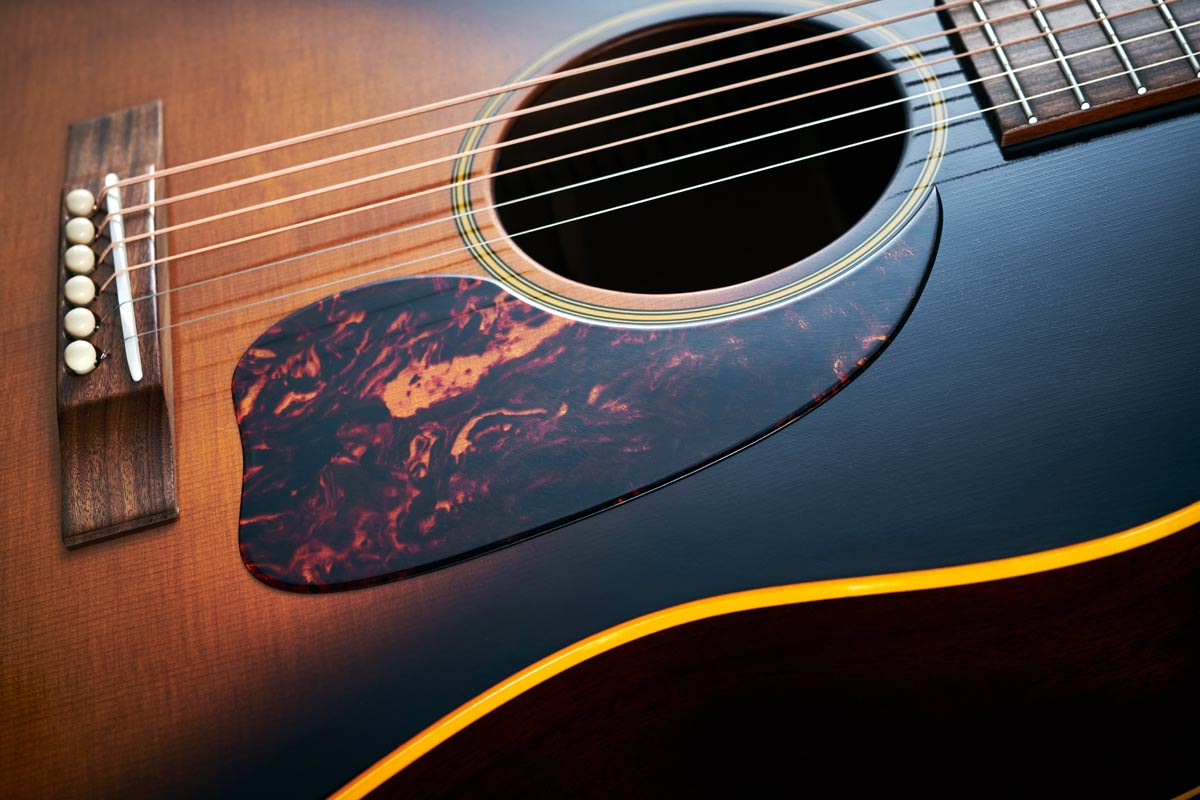
Performance and Verdict
The Forty Three's cup overfloweth with vintage mojo. There's no getting away from it. From nose to tail, it references a bygone era in guitar design, before decimalisation, before the colour TV, before the electric guitar. It's an anachronistic mystique that feels like a palliative to our digitised world.
There is a classic rounded C profile, a big comfortable club that invites you to roll into some chord work ASAP. The 42mm (1.65-inch) nut width might be a little cramped for some finger pickers but that is a question of feel, and it never stopped anyone on the Gibson J-45s of the era.
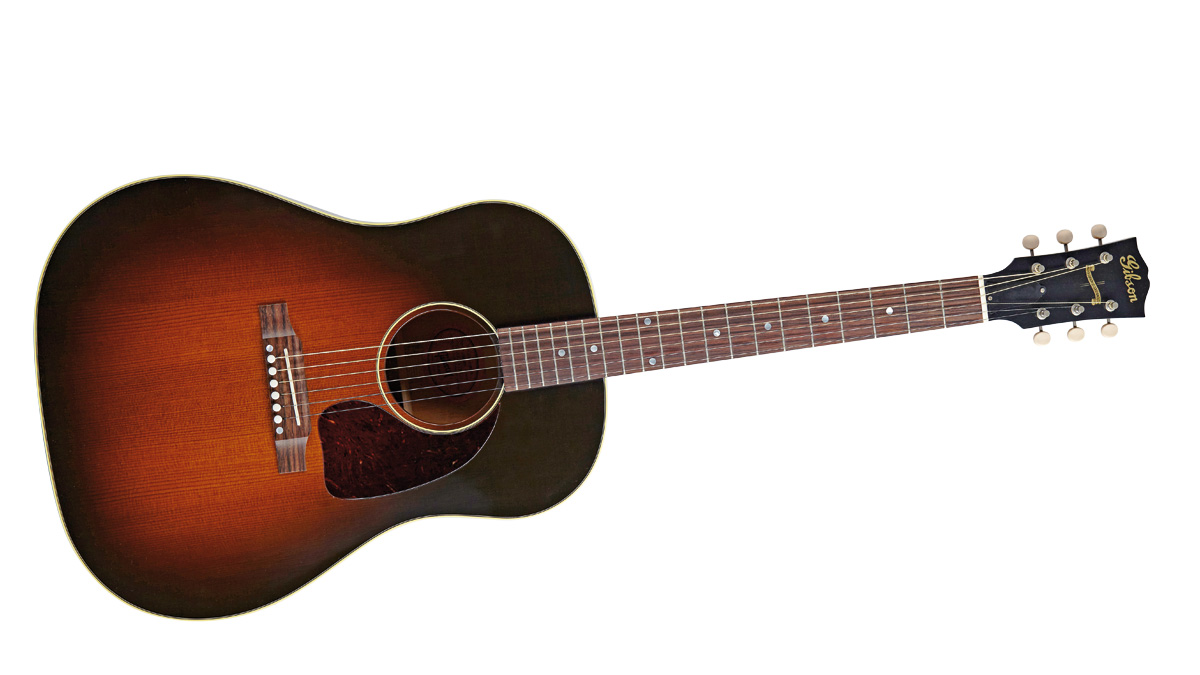
• Gibson J-45 Vintage
Any guitar that brings the office to a standstill while its incumbents drool and swoon over it, is something special indeed.
• Sigma JM-SG45
The SG series guitars are the underrated champions of their mid-priced realm. Not only is it refreshing to see guitars built with ambition in mind, but sharing that quality with the world is an unqualified luxury that shouldn’t be ignored
Indeed, this is a round-shouldered dread that can be pressed into all kinds of action. Strum it and there is enough substance to the lower mids to hold up and project your chord work; pick it and you'll find those details faithfully transferred. Compared to an industry-standard dread' such as the D-18, and it has a little more on the top end, and a little more midrange too.
It's quite aggressive sounding. The 120mm (4.75-inch) body depth gives it a good bit of welly, and The Forty Three excels playing Delta blues passages, with that sort of raw animalism you need when playing as hard as you like. Hit it hard and let it keep coming back for more – that's our advice.
Where is this bright and lairy voice coming from? A lot of it has got to do with the baked spruce on top, the artificial ageing process lending itself to a more open-sounding instrument than we could reasonably expect for a 21st Century build. So, yeah, it's pretty darn good.
MusicRadar verdict: The Forty Three nails that wartime acoustic vibe and presents a worthy alternative to the J-45 if you are looking for a round-shouldered dread with attitude.
The web says
"Although it’s a slope-shouldered variety of dreadnought, the bass is powerful but well proportioned and far from boomy. It has an enjoyable punchiness, but there’s a woody and rounded quality to the notes rather than a cutting front end or a twangy bite."
Guitar
Hands-on demos
Andertons
Atkin
Specifications
- PRICE: £2,899 (inc hard case)
- ORIGIN: UK
- TYPE: Round-shoulder dreadnought acoustic
- TOP: Solid baked Sitka spruce, vintage X-braced, hand-scalloped
- BACK/SIDES: Solid African mahogany
- MAX RIM DEPTH: 120.7mm (4.75”)
- MAX BODY WIDTH: 410mm (16.14”)
- NECK: African mahogany
- SCALE LENGTH: 630mm (24.8”)
- TUNERS: 3-on-a-plate Kluson with plastic buttons
- NUT/WIDTH: Bone/42mm (1.65”)
- FINGERBOARD: Santos rosewood (pau ferro)
- FRETS: 19, medium fine
- BRIDGE/SPACING: Santos rosewood/56mm (2.2”)
- ELECTRICS: None
- OPTIONS: See ‘Maker’s Marks’ box
- RANGE OPTIONS: Plenty of slope-shoulder choice: the Hawaiian Master, The Thirty Eight, The Nineteen, The Nineteen Deluxe, The Forty Seven and The Thirty Six
- LEFT-HANDERS: Yes
- FINISH: Nitrocellulose, aged (as reviewed; gloss also available)
- CONTACT: Atkin Guitars
MusicRadar is the number one website for music-makers of all kinds, be they guitarists, drummers, keyboard players, DJs or producers...
- GEAR: We help musicians find the best gear with top-ranking gear round-ups and high-quality, authoritative reviews by a wide team of highly experienced experts.
- TIPS: We also provide tuition, from bite-sized tips to advanced work-outs and guidance from recognised musicians and stars.
- STARS: We talk to musicians and stars about their creative processes, and the nuts and bolts of their gear and technique. We give fans an insight into the craft of music-making that no other music website can.
“Built from the same sacred stash of NOS silicon transistors and germanium diodes, giving it the soul – and snarl – of the original”: An octave-fuzz cult classic returns as Jam Pedals resurrects the Octaurus
What’s the buzz? Meet Yellowjacket, Cherry Audio's recreation of EDP’s trend-setting Wasp from 1978
“A fabulous trip through all eight songs by 24 wonderful artists and remixers... way beyond anything I could have hoped for”: Robert Smith announces new Cure remix album











